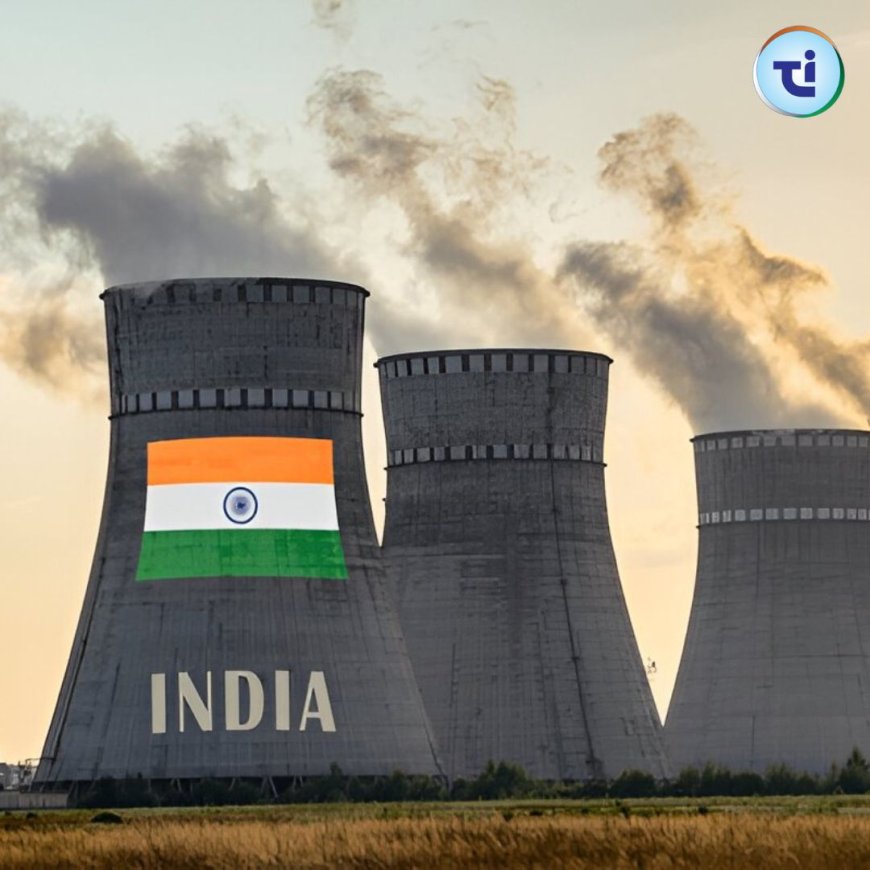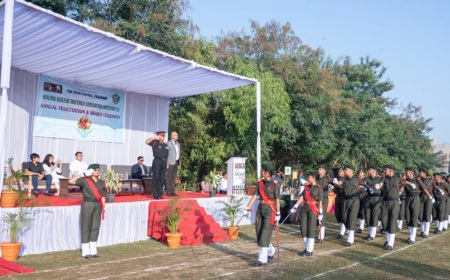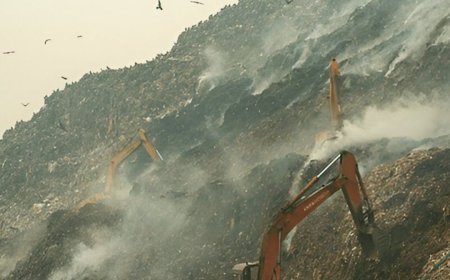Nuclear Power Plant In India
A Nuclear Power Plant in India generates clean and efficient energy through atomic reactions, with major facilities located in Kudankulam, Kaiga, and Tarapur.

As India strides towards economic growth and industrial expansion, its demand for reliable and clean energy continues to rise. While coal, solar, and hydroelectric power contribute significantly to Indias energy mix, nuclear power has emerged as a key component of the nations long-term energy strategy. With 22 operational nuclear reactors generating 6,780 MW of installed capacity, India is actively expanding its nuclear footprint to ensure energy security, reduce carbon emissions, and meet the growing needs of its population and industries.
This blog takes a deep dive into the current status of nuclear power in India, existing and upcoming projects, and the countrys ambitious plans for the future.
? Why Nuclear Power?
Nuclear energy is a clean, efficient, and dependable source of power. Unlike fossil fuels, it doesnt emit greenhouse gases during electricity generation. It is also not weather-dependent like solar or wind, making it a reliable base-load power source. For a country like India, with a huge and continuously growing electricity demand, nuclear power offers a strategic solution for:
-
Reducing carbon footprint
-
Diversifying the energy portfolio
-
Enhancing energy security
-
Reducing import dependency on oil and coal
?? Current Status: Operational Nuclear Power Plants
India currently operates 22 nuclear reactors located across several states. Heres a closer look at the key plants:
1. Tarapur Atomic Power Station (TAPS), Maharashtra
-
Significance: Indias first commercial nuclear power plant.
-
Units: TAPS-1 and TAPS-2 are boiling water reactors, while TAPS-3 and TAPS-4 are pressurized heavy water reactors.
-
Status: Operational and feeding the western grid.
2. Rajasthan Atomic Power Station (RAPS), Rawatbhata, Rajasthan
-
One of Indias largest nuclear power complexes.
-
Multiple pressurized heavy water reactors (PHWRs) contribute significantly to Rajasthans electricity needs.
3. Madras Atomic Power Station (MAPS), Kalpakkam, Tamil Nadu
-
Operates PHWRs and is an important facility for Indias nuclear research.
-
Supports both civil energy and defense research efforts.
4. Narora Atomic Power Station (NAPS), Uttar Pradesh
-
Supplies power to the Northern Power Grid.
-
Consists of two PHWR units.
5. Kakrapar Atomic Power Station (KAPS), Gujarat
-
A key plant in Indias western grid.
-
KAPS has seen successful commissioning of newer indigenous reactors.
6. Kaiga Generating Station, Karnataka
-
Supplies reliable electricity to the southern region.
-
Notable for maintaining excellent safety and performance records.
7. Kudankulam Nuclear Power Plant (KKNPP), Tamil Nadu
-
Currently the largest nuclear power station in India.
-
Built in collaboration with Russia (Rosatom), it includes two operational units of 1000 MW each and more under construction.
? Reactors Under Construction
India is rapidly expanding its nuclear capabilities through new projects and extension of existing ones:
?? Kakrapar Atomic Power Plant Units 3 & 4
-
Located in Gujarat.
-
The new units will enhance capacity and incorporate indigenous technology.
?? Prototype Fast Breeder Reactor (PFBR), Kalpakkam, Tamil Nadu
-
Capacity: 500 MW.
-
Developed by BHAVINI (Bharatiya Nabhikiya Vidyut Nigam Limited).
-
A key step in Indias 3-stage nuclear program, focusing on plutonium-based reactors.
?? Other Construction Sites
-
Gorakhpur (Haryana): Units are in early stages.
-
Chutka (Madhya Pradesh) and Mahi Banswara (Rajasthan) are approved and under pre-construction planning.
? Future Expansion Plans
Indias nuclear vision is bold and ambitious. The government plans to increase nuclear capacity to 22,480 MW by 203132, which would more than triple the current capacity. This will involve a combination of:
-
Commissioning new plants
-
Adding units at existing sites
-
International collaborations for technology and fuel supply
? Jaitapur Nuclear Power Project, Maharashtra
-
One of the most ambitious nuclear power ventures in India.
-
Planned to host six reactors, each with a capacity of 1650 MW, developed in partnership with EDF (France).
-
Once complete, it will be the worlds largest nuclear power generation site.
? Key Organizations Behind Indias Nuclear Power Program
NPCIL (Nuclear Power Corporation of India Limited)
-
The central player in Indias civil nuclear energy efforts.
-
Responsible for the design, construction, and operation of nuclear power plants.
-
A Public Sector Undertaking (PSU) under the Department of Atomic Energy (DAE).
BHAVINI
-
Focuses on fast breeder reactor development.
-
Playing a key role in the second stage of Indias nuclear fuel cycle using plutonium.
? Indias Three-Stage Nuclear Power Program
Indias nuclear program was designed for long-term sustainability using its abundant thorium reserves. Devised by Dr. Homi Bhabha, the three-stage plan is as follows:
-
Stage 1: PHWRs using natural uranium fuel.
-
Stage 2: Fast Breeder Reactors (FBRs) using plutonium from spent fuel.
-
Stage 3: Advanced nuclear reactors using thorium (U-233), India's most abundant nuclear resource.
India is currently transitioning between Stage 1 and Stage 2.
? Environmental Benefits of Nuclear Power
In the context of climate change, nuclear power provides several advantages:
-
Zero carbon emissions during operation
-
Lower land footprint than solar or wind for equivalent energy output
-
Less air and water pollution compared to coal-based plants
For a developing country with rising urbanization, nuclear power offers a clean base-load alternative to fossil fuels.
?? Challenges and Public Concerns
Despite its potential, nuclear energy in India faces some hurdles:
-
Public opposition in some areas due to safety fears
-
Delays in project execution and cost overruns
-
Limited domestic uranium availability
-
Need for international cooperation for fuel and technology
India has addressed many of these concerns by:
-
Strengthening safety norms (post-Fukushima)
-
Building robust waste management systems
-
Promoting transparency and public outreach
?? Nuclear Safety and International Compliance
India follows global best practices for nuclear safety. Regulatory bodies like the Atomic Energy Regulatory Board (AERB) ensure safety guidelines are implemented effectively. India is also a member of:
-
International Atomic Energy Agency (IAEA)
-
Nuclear Suppliers Group (NSG) (pending full membership)
-
Convention on Nuclear Safety
These affiliations ensure India remains compliant with international norms and promotes peaceful nuclear usage.
? Conclusion: Powering Progress Through Nuclear Energy
Nuclear power in India represents a crucial pillar of the countrys strategy for a cleaner, more resilient, and energy-secure future. With 22 operational reactors, multiple new units under construction, and plans for a threefold capacity increase by 2032, India is embracing the atom as a key to energy independence and climate action.
As technology advances, public awareness grows, and infrastructure strengthens, nuclear power will play an even larger role in lighting up India's homes, factories, and industriesall while helping the country move toward a low-carbon future.



































